Are you ready to fight frog monsters, punch nazis and fail to stop the impending apocalypse alongside everyone’s favorite big demon in a cooperative board game with beautiful miniatures that pay tribute to almost 30 years of Mike Mignola’s beloved Hellboy? Then dive in to learn more about Hellboy: The Board Game and if it might be up your alley!
Table of Contents
Overview
Hidden behind the façade that you call the “real world” is another reality entirely: one teeming with malevolent creatures waiting for the opportunity to devour everything you know and love, and filled with horrifying secrets that can shatter a person’s mind or – worse yet – be exploited by those with evil intent in a bid for greater power. Someone has to stand against these threats, and when the call goes out, the brave members of the Bureau of Paranormal Research and Defense answer. Leading many of their field operations is the world’s greatest paranormal investigator: the (somewhat) demonic entity known only as Hellboy.
Hellboy: The Board Game is a fully cooperative dungeon-crawler for 1-4 players based on the characters and stories of Mike Mignola’s Hellboy and it is chock full of miniatures. The game was launched on Kickstarter by Mantic Games in 2018 and has since released to retail along with a number of expansion and as of this writing (in 2020) is an active part of Mantic’s product line. In Hellboy, you and your friends will take on the roles of the BRPD’s paranormal investigators and their allies as you delve into various unexplained occurrences, search for clues on how to stop them, and fight back the oncoming tide of evil with whatever equipment you’ve got to hand. And if all else fails, you can always fall back on the judicious application of a bookcase to the villain’s head.
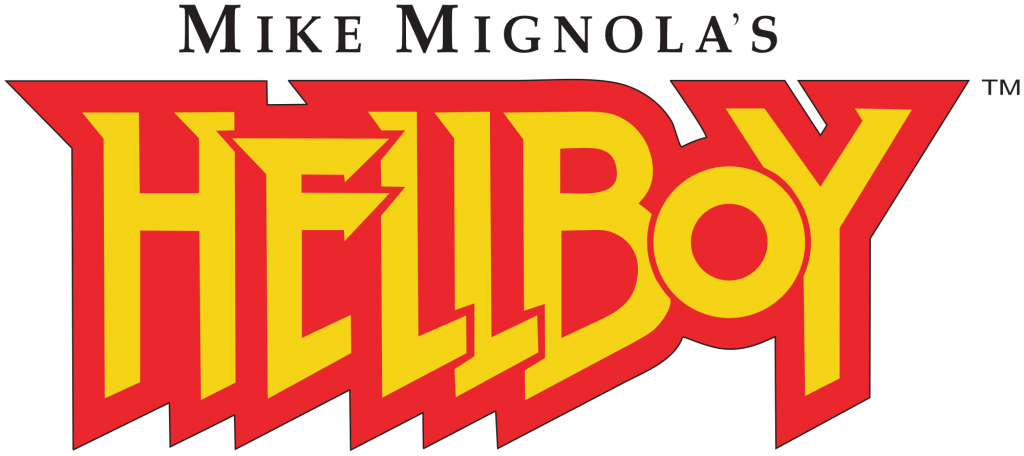
Diving into the background of Hellboy is well beyond the scope of this review but for those unfamiliar, Hellboy is a comic book character and universe created by Mike Mignola in the early 90’s. The eponymous character is summoned by a benign demon of unknown provenance who works for the Bureau of Paranormal Research and Defense (BPRD), a government agency whose task is it to investigate and deal with occult phenomenon around the world. The Hellboy stories are a unique mix of pulp horror and sci-fi with strong Lovecraftian influences. They feature fun, interesting characters and gorgeous artwork. If the game piques your interest I highly recommend reading some of the comics—particularly Seeds of Destruction—which is the first Hellboy miniseries and essentially the context of the board game we are about to talk about.
In Hellboy: The Board Game, each player takes on the role of a BPRD Agent exploring the map for clues, fighting off baddies, and generally battling existential dread and impending doom over the course of 2-3 hours. The core game comes with Hellboy, Liz Sherman, Abe Sapien and Johan Krauss who investigate 6 Case Files involving Rasputin and his evil plans to free the Ogdru-Jahad. Case Files are a unique deck of cards that instruct you to build a map out of the included tiles and contains secret contents revealed during play. This makes for a fun sense of discovery and mystery for the players.
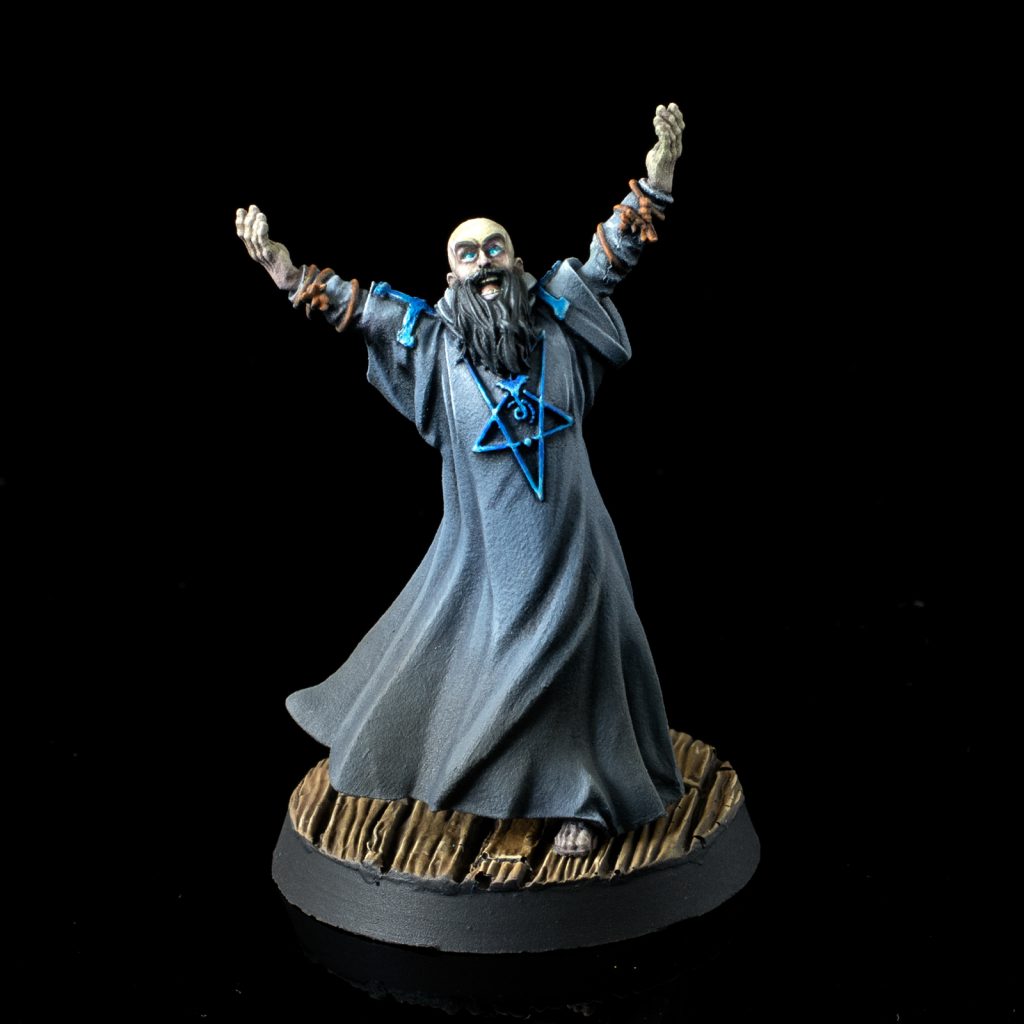
Each Case File culminates in a Confrontation, which is usually a boss battle against one of the series’ iconic villains such as Rasputin or a Giant Frog Monster. If the agents manage to complete the confrontation, the game is won and doom is held at bay for just a little while longer (but not really).
The Case Files in the game are not linked, can be played in any order, and there is no campaign mechanism. This makes the game ideal for intermittent or spontaneous play as it does not require a persistent gaming group or anything like that.
I’m going to go into greater detail about various aspects of the game but for those looking for a short and sweet review, I think the game is well worth playing and heartily recommend it. There are tons of dungeon crawlers out there, with varying levels of crunchiness across any number of themes and Hellboy stands alongside the best of them. Agents are very distinct, with unique skills and actions that make each play differently by changing the way you approach cases and bosses. Additionally, each Boss gets a custom behavior deck that dictates their actions. This creates a lot of variety because Big Bad A and Big Bad B aren’t just the same underlying AI with different miniatures; each confrontation plays out totally differently.
The game also oozes theme, between the flavor text in case files to the beautifully sculpted miniatures and the random events generated by the Deck of Doom. Finally, the game strikes the difficult balance of sufficient depth to its rules without bogging down the game with unnecessary dice rolls or “fiddly-ness” that ultimately doesn’t improve the game. The rules are quick to grasp and may seem initially simple but they provided enough depth to fuel plenty of discussion between players about the best way to tackle any given situation, weighing different actions and order of operations to ensure triumph.
Kickstarter vs. Retail
It is worth noting that Hellboy: The Board Game was a Kickstarter project and subsequently released to retail. As such there are significant differences between the Kickstarter and Retail release. The Kickstarter pledge essentially contained the following:
- Core Set (released to retail)
- Conquerer Worm Expansion (Kickstarter Exclusive)
- BPRD Archives Expansion(releasing to retail soon)
- Kickstarter Exclusive Minis
In this review we are focusing on the Core Set which is functionally the same whether you got the Kickstarter box or purchased the game at retail. Subsequent articles will cover the various expansions (exclusive and otherwise) and exclusive miniatures.
Components
Miniatures
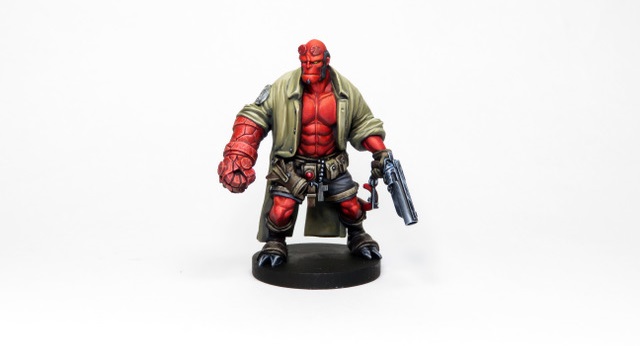
One of the big draws of the Hellboy is the host of miniatures that really bring the Hellboy universe to life and immerse you in the game. Every agent and enemy is represented by a beautifully sculpted miniature that captures the iconic characters quite well. They are made of a pretty hard PVC plastic that holds detail well (the BPRD logos on the agent uniforms are quite impressive) and they take to painting easily thanks to their stylized look. Like with any PVC miniatures, you’re going to run into some bent parts or warped bases but this was trivially fixed with some hot water.
The core game comes with the four agents previously mentioned as well as a slew of frog monster minions and three bosses: Rasputin, a giant frog Monster, and the tentacles of Sadu-Hem. The last two are impressively big miniatures that dwarf the agents and appropriately convey their menace.
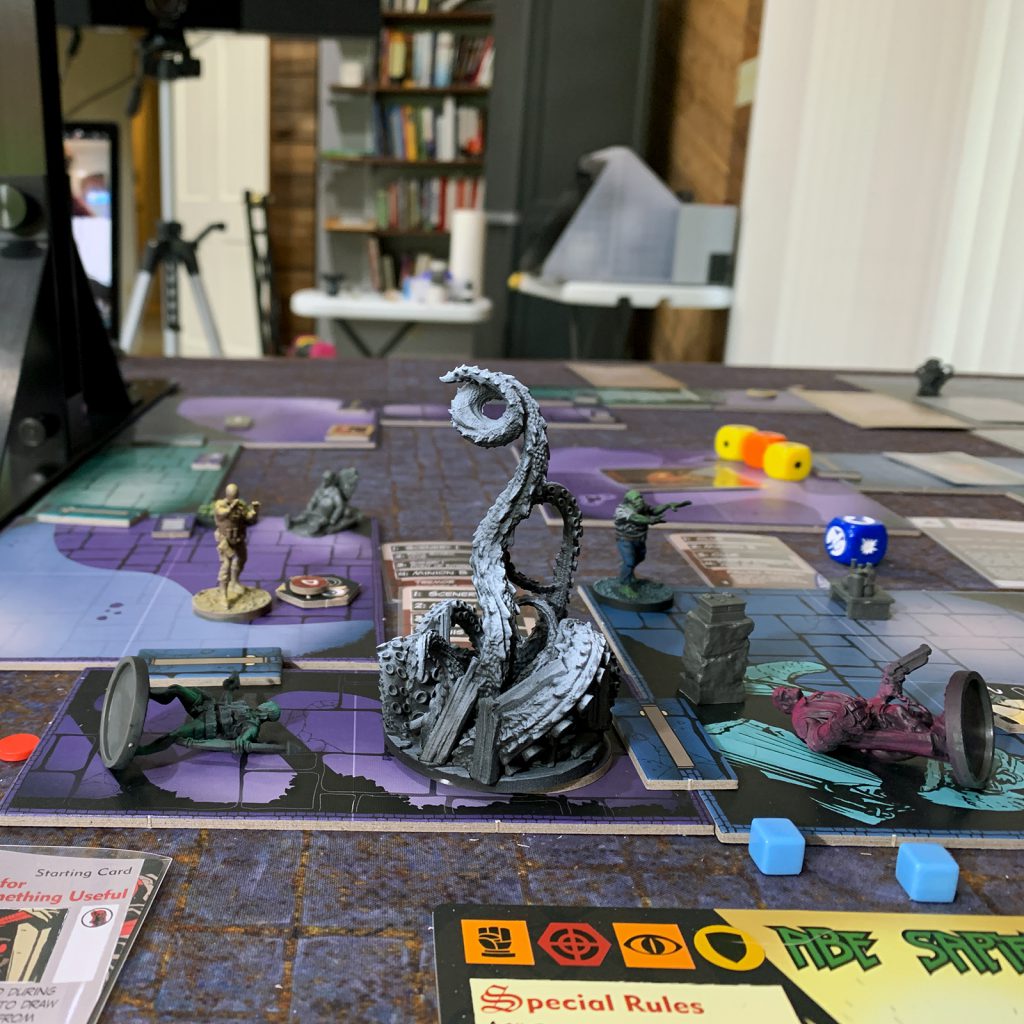
The frog monster minions are cool and you do get 4 different sculpts for them but a little more variety would have been nice since you will be facing a lot of these. Fortunately they paint up real quick and the 4 sculpts are different enough to easily distinguish the four types of frog monsters at a glance.
A final note, for those with no interest in painting the miniatures, is that I wish Mantic had made different color choices for the plastic. The dark grey color chosen doesn’t really do the sculpts justice and something a little lighter might have been better. Even better would have been to use colored plastic for the agents and enemies to more easily distinguish them, as many games do. Having the enemies in green plastic and the agents in grey or something like that would have been a small but significant change for those playing unpainted.
Everything Else
While the miniatures may be the main attraction, they’re far from the only components included in the game. The game is played on a set of modular tiles that have a beautiful Mignola-esque feel to them and end up making for quite varied layouts for the different case files. Additionally, there’s a host of tokens representing doors, clues and furniture which all look great and are quite sturdy (I hate flimsy tokens). Lastly, you get a ton of cards in different sizes for the case files, equipment, enemies, encounters and agents.
The two best cards are the Requisition and Deck of Doom cards. The first of these represent equipment and gear the agents bring out into the field; there are a ton of these mini-sized cards and all of them are illustrated with panels taken directly from the comics, which is a great touch. Similarly, the deck of doom cards (poker size) are highly thematic and illustrated with comic art.
The case file and enemy cards are much less interesting. The former guide you through the game’s sessions and they do the job well but they really could have benefited from better layouts (to make them easier to grok) and some artwork. As they stand they’re pretty much all text and look kind of boring. The enemy cards are also not laid out particularly well and instead of using comic book artwork, just have grey renders of the miniatures on them. On the one hand it makes it easy to identify which mini corresponds to what card but it definitely detracts from the immersion.
On the whole, the components in the game are excellent quality and pretty much everything you could need is in the box ( aside from a way to store the individual cases after they’ve been unwrapped).
The Game
At its core, Hellboy is a dungeon crawler and if you’ve played one before, you’ll have a good sense of the overall structure of the game. Players get three actions every round used to activate their agents and explore a map, investigate clues, and fight enemies. Enemies also activate each round and follow their AI while doom cards add twists and tension to the session. It all culminates in the Confrontation (boss fight). So let’s talk about the core mechanics that set the game apart and give it that Hellboy feel.
Core Mechanics
Dice Tests
Any time an agent makes an action with an uncertain outcome, such as shooting, fighting, defending against an attack or trying to examine a cluee, they make a dice test. Hellboy uses a custom set of color-coded dice to represent different levels of proficiency in these core skills; different pip shapes make these colorblind friendly. You have yellow, orange, red, and black dice, each with increasingly better odds of success. Different characters use different colors depending on how good they are at that skill; Hellboy is predictably good at fighting and uses red dice for those tests but is terrible at shooting (the Torch of Liberty did say he was the worst shot he ever tried to train after all) and uses yellow dice for those tests.

A dice test consists of rolling the three dice of the appropriate color plus the effect die and comparing against a target number. It’s a simple system but there’s a few quirks that make it quite interesting. For starters, the effect die can have wildly different effects on your rolls, possibly wiping out your highest die, or doubling it, allowing re-rolls, or triggering a ‘wild card’ effect that may then interact with traits on an Agent’s card or some of their equipment. Additionally, different effects can upgrade or downgrade a die, so an orange die can be downgraded to yellow (with worse odds of success) or a red die can be upgraded to black (with better odds) due to environmental effects, position of enemies or if a player chooses to boost another player. The last of these is particularly interesting because in order to boost another player, you have to share a space with them. this creates choices around positioning and action economy that truly make the game cooperative; deciding whether it makes more sense for me to take an action or sacrifice an action to help a colleague can have a huge impact on how the game plays out.
Case Files

Case Files are the heart of the game and form the basis of your playing sessions. Each Case File represents a self-contained play session with a custom map, deck of doom, objectives, enemies and confrontation. The core set includes 6 different case files and these are classified as either Easy, Medium or Hard, and Short, Medium or Long. You can expect a long session to take about 3 hours (including setup) and short ones to be closer to an hour.
The Case Files themselves are a deck of 7-12 cards that provide all the instructions you need to play a session of Hellboy starting with building the Deck of Doom (see below), laying out the map, and providing players with initial goals and objectives. The case file contents are secret and players should only ever see the top card on the deck until instructed to flip or discard it. As players accomplish goals additional cards in the deck are revealed and these may alter the game in significant ways. I’m being intentionally vague here because there are some really fun surprises in the case files and I don’t want to spoil them. Ultimately we get to the Case File Confrontation, which is usually a boss fight of some sort.
An interesting quirk here is that while you will always make it to the confrontation, there are numerous ways to trigger it and some of them are much more advantageous to the players than others. Triggering the confrontation because you ran out of time and doom strikes is definitely not something you want to have happen, so players are incentivized strongly to meet the goals and objectives of the first half of the mission to they can enter the confrontation as well prepared as possible.
The gradual unveiling of the case files makes for a really great sense of discovery and mystery in the game and it’s definitely one of my favorite mechanics.
The Deck of Doom
One of the core phases of the game is the Doom Phase, which occurs after all the agents have used their actions and add constant twists and turns to the play session. Each Case File will instruct you to build a custom Deck of Doom, pulling a subset from a large set of cards that represent random events, setbacks, and the occasional boon. Each Doom Phase, you draw the top card from the Deck of Doom and then do what it says, which can have all kinds of effects on the game, both instantaneous and ongoing. This adds another layer of unpredictability to each play session and keeps the players on their toes.
A common side effect of doom cards is advancing the doom tracker, which is a tracker on the board that represents the moment when BAD STUFF is going to happen. If the doom tracker reaches a pre-determined spot on the board (as determined by the case file), the Confrontation triggers and will usually put the agents in a pretty bad spot compared to if they’d triggered the confrontation by accomplishing the case file’s objectives. What this means is that the deck of doom adds a really great tension mechanic to the game that forces the players to trade off between full exploration, or taking breaks to heal and risking an untimely triggering of the confrontation. A lot of the discussions I’ve had with my fellow players have been about how we manage the doom tracker and ensure we don’t get caught flat-footed by a giant frog monster or some other nefarious menace.
Boss Behavior Deck
The last key core mechanic we will talk about is the Boss Behavior Deck. While all enemies act based on a keyword based AI (so some enemies favor ranged attacks, others run away from the players, some are aggressive brawlers, etc.) the game takes a more sophisticated approach for bosses. Each boss specifies how to build a custom behavior deck that can vary wildly between bosses. When that boss is activated you draw the top card and do what it says (which itself can vary depending on where the boss is, if agents are in its space, etc.). The simple mechanic means that no two boss battles play out the same way and you never know quite what to expect from what you’re facing. Rasputin may focus on keeping distance from the players while summoning additional minions while Sadu-Hem may burrow into hiding only to explode out of the ground a turn later, sending all the agents flying.
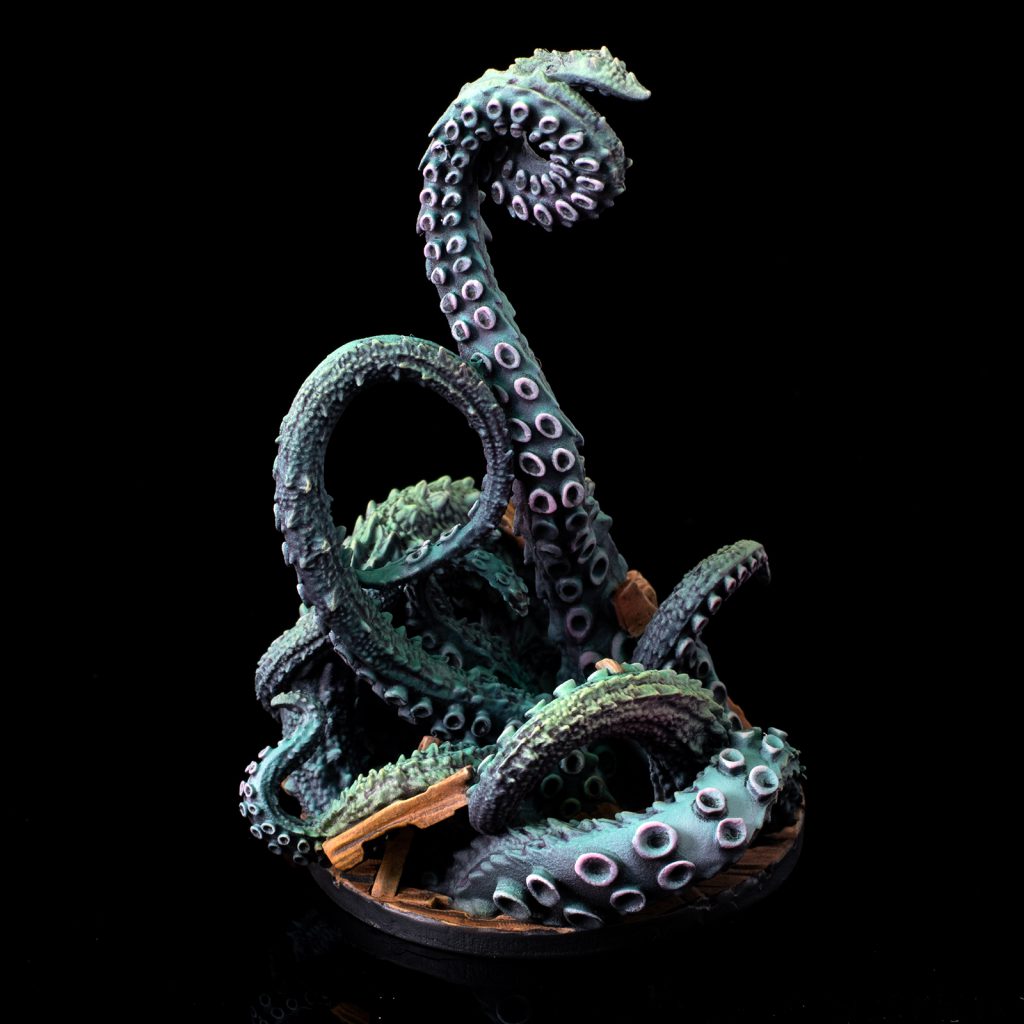
In too many games, bosses are just beefier versions of standard minions and don’t actually behave any differently. Hellboy’s Boss Behavior deck does a great job of making boss fights interesting and varied and it’s one of my favorite mechanics in the game.
Replayability
So at this point we’ve covered a lot of what makes Hellboy unique and part of it is the very interesting Case Files. So what does that mean for replayability? If a big draw is the act of discovering the case files, then how does that hold up to a second playthrough when you already know what’s coming? Well, fortunately the surprise factor isn’t all the game has going for it. Depending on your appetite for replays, you can definitely get a lot of mileage out of it. The deck of doom and encounter deck both create unpredictability from playthrough to playthrough and every agent plays completely differently so that can create a lot of variety. You might pick up a later expansion and decide to play through an old case file with one of the new agents and that will definitely be a new—if not entirely fresh— experience. All that said, between the core set and the expansions there’s about 16 different case files already, so it’ll be a while before you need to repeat. A later article will cover the BPRD Archives Expansion which allow you to generate your own case files and add a ton of replayability to the game.
Playing Remotely
This article is being written in the midst of the COVID-19 Pandemic and in fact the author specifically chose to pick up this game as a way to play games remotely with friends since in-person gaming is not an option right now. So how does the game work over webcam? In short, it works great.
For starters, the game is fully cooperative with zero hidden information, and that vastly simplifies playing remotely because there is no concern that one player might be incentivized to hide or obfuscate information for personal advantage. The game leans into its cooperative nature and so a lot of the player interaction comes down to discussing and deciding on a shared strategy for any given turn. This plays out perfectly naturally via videoconference. You just have one player setting up and moving the actual physical game and acting as a physical proxy for everyone else but the game otherwise plays out identically to having everyone in the same room.
Players need a solid view of the gameboard and that’s easy enough to do with your typical webcam, maybe supplemented with some close-up stills showing where all the agents and enemies are. The sculpting style of the miniatures and the artwork means things are fairly easy to distinguish over webcam and that really helps in keeping everyone engaged. In my own playthroughs, I roll all the dice on camera and there’s a lot of shared tension in seeing the results which is quite fun but another option is to have each player get a set of the dice (which are sold separately) and then everyone can do their own rolls on camera if that’s what people prefer.
A key advantage here is that players don’t have to track a bunch of ongoing information, the board state and agent health are about it, so that makes the game extra conducive to remote play versus something like Gloomhaven where players are keeping track of a lot more data.
Final Thoughts
Overall, Hellboy is a great addition to the Mignolaverse and a solid entry in the Dungeon Crawler category with a number of unique features that help it stand out. It’s a medium weight game that plays well with a variety of player types and doesn’t demand a massive time commitment. For those that like that sort of thing (i.e. me) it contains beautiful miniatures, fantastic artwork and really captures the themes of a Hellboy adventure nicely. As you start to add expansions and in particular the case file construction system (which we will go into detail in a later article) you end up with a rather sprawling game that will provide tons of enjoyment over many hours.
Disclosure: This review was written based on playing 5 of the 6 case files in the core set with 3 players. The reviewer used a personally purchased copy of the kickstarter edition of the game.



You must be logged in to post a comment.